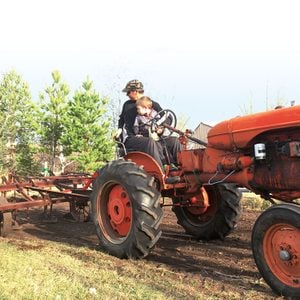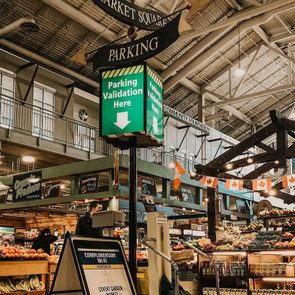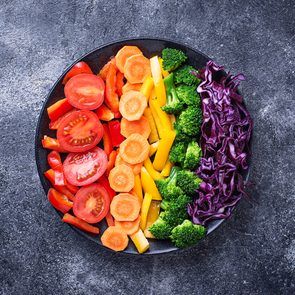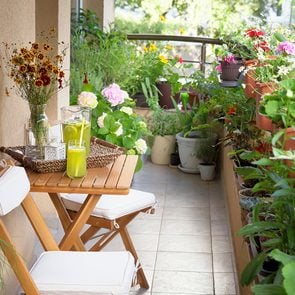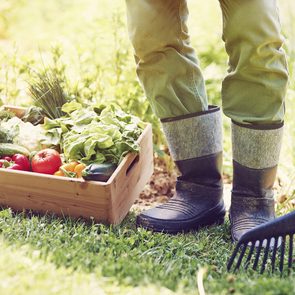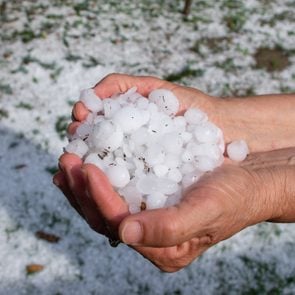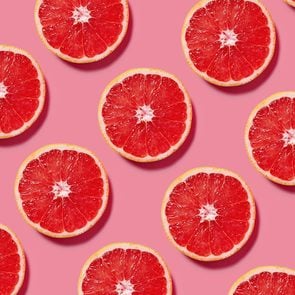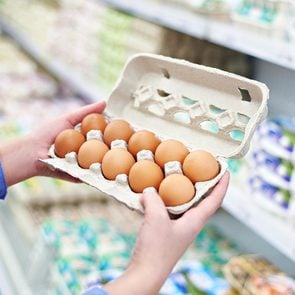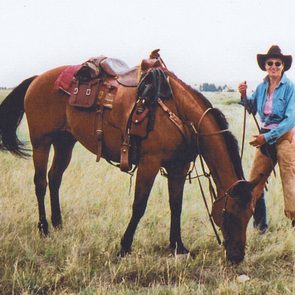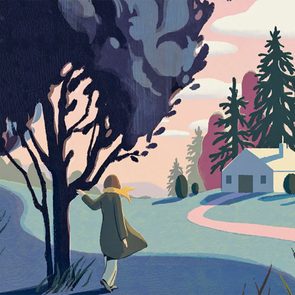Our family’s story begins in 1913 when my grandparents, Ernest and Anna, were married at the Anglican church in Palermo, Ontario. They soon returned to Penzance, Saskatchewan, to work the family farm—a 160-acre parcel of land that had been granted to my great-grandfather, William Sr., in 1904.
In Penzance, the Rayner men purchased a 75-horsepower JI Case steam engine and, over the years, a threshing team was established to assist neighbouring farmers harvest their grain. Unfortunately, in 1922 my grandfather died of pneumonia, leaving my grandmother to raise their three children. Anna returned to the Boyne, Ontario, area following his death and built a home on a one-acre parcel of land that her brother severed from his own farm.
In 1947, my grandmother purchased a farm close to her in hopes that her children could make a good living. It was 100 acres of happiness, with fresh air, unique smells, John Deere tractors and work horses.

Growing up on a farm as one of four daughters, I learned to drive our John Deere tractors at an early age. My first opportunity and experience was with a John Deere AR model. It had a hand clutch that seemed hard to operate at nine, and I spent hours going up and down the fields. As each summer passed, it definitely got easier to drive.
Don’t miss this heartwarming story about what it’s like learning to drive on the farm.
Origins of the Milton Steam-Era Festival
In 1961, my father’s friends shared with him their interest and love for antiquities. These gentlemen had successfully managed “The Power & Steam” show at Les and Ellen Lowes family farm the year before. Collectively, they wanted to continue this success and show off their collections of steam engines, gas tractors and antique collectibles at the Milton Fair Grounds. At the time, it cost 75 cents to see these technological wonders.
My father, Gordon Rayner, became a core part of the show. So invested, in fact, that he first began working as the treasurer, then vice president and eventually, president. His longest-serving position on the board, however, was as secretary for 18 years. As the show grew, so did our family. By 1967, when Canada celebrated its 100th anniversary of Canadian Confederation, Dad was father to three daughters and our mom ensured that our family did their part to commemorate this special occasion by sewing matching red gingham dresses and bonnets for all of us to wear.
Growing up, I followed my dad wherever he went. I loved the chugging sound of the Rumely tractors and was equally as amazed at the rows of steam engines. It wasn’t until I was older that I realized the importance of our green tractors.
Whether it was bringing dignitaries through the downtown parade, giving rides in our Bain wagon, or participating in the threshing competition, our team of Belgian horses named King and Bill were known as the Steam-Era horses. King and Bill not only worked hard on the farm, they also enjoyed the steam show like the rest of us. It was fun for them to give rides to guests.
Threshing was a part of the show from the beginning. In the mid ’70s after a team from Saskatchewan challenged our farm boys to a competition, Steam-Era invited them to participate at the threshing competition during the show. By the end of the weekend, the western boys claimed victory and hoisted the trophy.
Losing was not something our Steam-Era members wanted their legacy to be defined by, so in 1978, they challenged the western team to a rematch. With the world title on the line, our team headed to Saskatchewan. Determined to regain the title, Allan and Jamie McBay, Bruce Davis, Dennis Webb, Allan Byers and William Rayner put on a tremendous show. After setting a record time for threshing, they became world champions. A record not challenged to date.
Every Labour Day, many of the same families reunite at the Milton Fairgrounds for the weekend’s events. Family heirlooms are pulled out of sheds, steam engines that have been restored and polished over the years allow Halton Hills to come alive. The day starts with a tractor pull, followed by live entertainment on the main stage. All of the steam engines at the show blow their whistles to indicate noon each day—a tradition that has continued over the years.
As a child, I looked forward to the Steam-Era festival—we became part of the Steam-Era family. These days, I love being able to continue these traditions with my girls.

Passing the Torch
As time goes by, knowledge and experience have been passed down through the generations. Since my father chaired the threshing competition, his wisdom and experience helped me to continue this legacy. Many of our current members are third and fourth generations, something we are proud of.
As we celebrate Steam-Era this Labour Day, we salute Canadian ingenuity and the invention of steam engines, and proudly uphold the core values of integrity, commitment and innovation. Although my father has passed away, his passion and love for the show lives on through us. Our family legacy and love for John Deere tractors can be seen on display at the show. As I drive around on my John Deere tractor with my two girls, I tell them to look up. Papa is smiling down on us.
Next, read the sweet story of a farm truck that was truly one-of-a-kind.
Simple summer salads are taking over TikTok right now, but none has created a stir quite like this surprisingly simple cucumber and pepper salad. Curious to try it for yourself? Keep reading to find out exactly how it’s done.
The Viral Cucumber and Pepper Salad Recipe
This viral summer salad was created by TikTok creator Rachael Kirkconnell. It consists of just five ingredients, takes mere minutes to make and results in a crunchy, refreshing and colourful flavour bomb of a dish. You can have it as a mid-day snack or serve it as a side dish at dinner.
Like a lot of viral TikTok meals, Rachael presents this salad as more of an ingredient-pairing suggestion than a set-in-stone recipe. Below is the ratio I recommend, but feel free to tweak the proportions according to your own taste.
This salad serves four as a side dish or two as a meal.

Ingredients
- 5 multicolour mini bell peppers
- 3 Persian cucumbers
- 2 tablespoons store-bought ginger dressing
- 1 tablespoon everything bagel seasoning
- 1 tablespoon chili crisp

Directions
Step 1: Chop the vegetables
Trim the tops off the peppers and discard. Using a paring knife, carefully cut the ribs out of the peppers and discard. Then slice both the peppers and cucumbers into thin rounds, and place in a large bowl.

Step 2: Dress the salad
Add the ginger dressing, bagel seasoning and chili crisp to the veggies. Toss to coat. Taste and adjust the seasonings, if you’d like.
Here’s What I Thought
First off, the colour combo is beautiful! The aesthetics combined with the satisfying crunch of the veggies makes the salad borderline addictive. If you want to serve it as a side dish, it would go perfectly alongside any grilled foods (like burgers), as well as barbecue favorites like ribs or pulled pork sandwiches.
Check out more easy summer salads worth adding to your repertoire.
There’s nothing better than sun-kissed, fresh-off-the-vine tomatoes, especially in the summer. Add a little basil, mozzarella and olive oil, and yum! Even better, these perennially popular home-garden crops are easy to grow (even as indoor plants), they don’t need much space and they produce tons of fruit all season long. However, without the right care, things can go awry, and you can end up with brown tips on your leaves or powdery mildew on your plants. But what if you spot purple leaves on the tomatoes in your garden? Is this a harmless anomaly or a sign that your plants are sick?
Let’s put it this way: It’s usually not something you should ignore. “Purple leaves on a tomato plant, while visually intriguing, can actually be a sign of distress,” says professional horticulturalist Amber Noyes.
Thankfully, this early warning sign can help you take steps to prevent your tomato crop from being obliterated. If you follow these expert-approved gardening tips, you’ll know exactly how to save your tomato plants.
Sign up for our Daily Digest newsletter for more home hacks, streaming guides and humour, all week long!
Why are there purple dots on my tomato plant?
A nutrient deficiency is the most common culprit, but it isn’t the only reason your tomato plant’s leaves or stem may start sporting spots or turning purple. That said, it’s essential to diagnose your plant’s specific problem if you want your plant to start producing those gorgeous tomatoes you’ve been banking on.
Phosphorous deficiency
A phosphorus deficiency is the leading cause of purple leaves on tomatoes, according to Noyes. This nutrient is essential for photosynthesis, the process by which a plant uses sunlight, water and carbon dioxide to create food for itself (as well as give off oxygen). How can you tell if this is your plant’s issue? It’s most common in new seedlings and transplants, and you’ll typically see the purple pop up on the stems and the undersides of foliage. You also might also see slow growth, necrosis of plant tissue and curling leaves. But it’s possible to revive a seemingly dead plant with this problem.
How to fix it: Use a high-phosphorus fertilizer on the soil. “The amount you’ll need will largely depend on the results of a soil test, but typically, a balance of 10–20–10 or 15–30–15 (N–P–K) is suitable for most tomato plants,” Noyes says. “The figures represent the ratio of nitrogen, phosphorus and potassium, respectively.”
To get the most accurate information on the nutrient levels in your yard, including phosphorus, purchase a soil-testing kit and send a sample to a lab for analysis. Instant-result testing kits are also available, but they aren’t as accurate.
Amateur gardeners can simply use a phosphorus-rich fertilizer according to the package instructions, typically every one to two weeks, until they notice an improvement in the plant’s health. “Once the purple dots disappear,” says Noyes, “continue to fertilize as directed by the product, but at a lower frequency, to maintain optimal plant health.”
Potassium deficiency
Potassium deficiencies also impact photosynthesis. They typically turn tomato-leaf edges brown and the veins yellow, though in some cases, purple spotting can also occur. This spotting is usually limited to the underside of the foliage.
How to fix it: As with phosphorus deficiencies, if a test shows your soil lacks sufficient potassium, you can apply a fertilizer high in this nutrient weekly until the purple colouring fades. Potassium levels are indicated by the “K” on the N–P–K numbers displayed on the label of all home-garden fertilizers. If you opt for a tomato-plant-specific formula, the potassium level will likely already be higher than it is for a normal fertilizer, so this is the way to go. Giving banana water to your tomato plant may also help, and it’s an easy and affordable option.
Magnesium deficiency
Less commonly, purple leaves on tomato plants can result from a magnesium shortage. “Magnesium deficiency often manifests as interveinal chlorosis, with the leaves turning yellow while the veins stay green,” Noyes says. “If the deficiency is severe, the yellowed areas can take on a purplish hue due to the accumulation of anthocyanin pigments.” Because you see the yellow discolouration first, if you’re proactive, your leaves shouldn’t reach the purple stage.
How to fix it: A natural way to increase the magnesium levels in your soil is to add Epsom salts. Dilute 1 tablespoon per U.S. gallon (3.75 litres) of water, and use this to water the plant soil every couple of weeks. However, do this only if a soil test clearly indicates a magnesium deficiency. Too much magnesium can hurt your plants by inhibiting calcium uptake. And to avoid leaf scorch, never spray the solution directly onto the leaves.
Cold soil
Sometimes your soil can have ample amounts of phosphorus, potassium and magnesium, but you still see purple leaves on your tomato plants and other symptoms consistent with a nutrition deficiency. In these instances, cold soil might be causing your problems. According to Noyes, cold soil inhibits the uptake of phosphorus and other nutrients.
Tomatoes are heat lovers, and a soil temperature of 65 to 75 degrees is ideal. When the soil drops to below 50, you’ll likely see stunted growth, and alongside discolouration, the foliage can wilt and experience surface pitting or lesions. Flowers begin to drop, and if your plant produces any tomatoes, they are unlikely to be the most flavorful.
How to fix it: “One way to combat this is through soil solarization, a method where you cover your soil with clear plastic and allow the sun to heat it over several weeks,” Noyes says. Alternatively, “adding compost or organic matter can also naturally raise the soil temperature.” Or you can try adding plastic or fabric mulch to trap heat in the soil, a method that kills weeds too. Regularly test temperatures using a soil thermometer; you can remove coverings once the ground is warm enough.
Too much sun
Tomatoes are fruits that love the sun, and they appreciate at least six hours of bright light daily. However, long days of intense sunlight during scorching weather can result in tomato sun-scald. The tomatoes crack and turn white or blotchy yellow, and the foliage tips can brown and curl. Sometimes the leaves turn red or purple. Purple leaves are especially common in delicate young seedlings.
How to fix it: Use a shade cloth to gently cover the plants if temperatures rise above 85 degrees F (29 degrees C). Or move the plants to an area where they still receive ample sun but not so much in the intense heat of the afternoon.
Genetics
Sometimes, purple leaves on tomatoes aren’t anything to worry about. “Genetics can play a role in the colouration of tomato plants, with some varieties naturally producing a more purple hue on their leaves, such as the Indigo Rose or Black Krim,” Noyes says. In that case, there’s nothing to fix because there’s nothing wrong!
Tomato spotted wilt virus
Tomato spotted wilt virus is an increasing problem in North America. The disease starts with dark brown or purple spots or veins on the foliage. Later, these spread to the stems and form necrotic cankers, which eat away at your plant until it dies.
This disease is transmitted by pests—specifically, at least nine different thrip species. These tiny winged insects, also known as thunderflies, don’t just transmit this virus; their feeding habits also directly damage fruit, foliage and shoots, giving plants an untidy appearance.
How to fix it: Unfortunately, this disease is incurable. It’s best to remove infected plants immediately to prevent spread.
Find out how to get rid of fungus gnats.
How long will it take for these treatments to work?
The purple leaves on your tomato plants may or may not green up with appropriate nutrients, warm soil and the right amounts of sun over a few weeks. The timing depends on the extent of the damage, the plant’s overall health and the general growing conditions. Also, keep in mind that while new leaves should be a healthy green, seedlings subjected to cold soils or poor nutrient levels for prolonged periods of time could remain stunted and produce inferior fruit.
Of course, if you aren’t seeing any changes after a few weeks of treatment or the situation is getting worse, your plant could be beyond saving. Sometimes, it’s better to cut your losses and start germinating a fresh, healthy batch of tomato plants, making sure to offer the right conditions from the beginning.
How to prevent tomato leaves from turning purple
As the saying goes, an ounce of prevention is worth a pound of cure, and that’s very true when it comes to purple leaves on tomatoes. To avoid unsightly spots and unhealthy crops, Noyes recommends being proactive with the following gardening tips:
- Regularly test your soil to ensure the nutrient levels are right.
- Pick a site where the soil won’t be too cold and the sun levels are appropriate.
- Monitor plants for disease-spreading thrips, and if you spot them, use insecticidal soap to remove them promptly. How can you identify them? Thrips are yellow, brown or black elongated winged insects around one-eighth of an inch (3 millimetres) long. Telltale signs that you have the start of an infestation include dried brownish-black poop spots on the underside of foliage and scarring on the leaves. If you tap the plant’s leaves while holding a piece of white paper under it, thrips may fall onto it.
What else should you keep in mind about growing tomatoes?
Of course, knowing how to prevent and treat purple leaves on tomatoes isn’t the only thing you need in your gardening repertoire. Here are a few other tips for nurturing happy and healthy tomato plants.
- Know your planting calendar, and grow tomatoes outdoors only after the danger of late-spring frosts has passed in your region. Alternatively, grow them in a protected greenhouse.
- Plant in loamy, well-drained soil.
- Pick a site that offers six to eight hours of sunlight.
- After testing the soil to establish the right formula, offer regular fertilizer to these heavy feeders.
- Select cultivars (human-developed plant-species varietals) best suited to your climate.
- Thin out seedlings when they are around two to three weeks old so the remaining plants have ample airflow and room to spread. Ideally, there should be 1-2 feet of space between individual mature plants.
- Water plants deeply and regularly to provide consistent moisture, easing up once fruit appears.
- Plant deeply, and stake tall plants for extra support.
- Don’t plant in beds that have had other nightshade family members, such as potatoes or peppers, in them over the last couple of years. Plant rotation using different crop families helps produce better harvests by disrupting pest and disease life cycles and improving soil nutrients and fertility.
About the expert
- Amber Noyes is a horticulturist and the editor of Gardening Chores. She has a master’s degree in horticulture from the University of California and a BS in Biology from the University of San Francisco.
Sources:
- University of Maryland Extension: “Key to common problems of tomatoes”
- Clemson Cooperative Extension: “Tomato diseases & disorders”
Check out more expert advice on starting a garden.
We’re all in favour of cleaning hacks that make chores easier to do. This simple move will save you hours of climbing up on a step stool to clean hard-to-reach places.
What is the waxed paper hack?
It’s so simple: You place a sheet of waxed paper on top of hard-to-see surfaces. Instead of sticking to the tops of cabinets, particles will stick to the surface of the waxed paper. Then, when it’s time to deep clean the house, all you have to do is carefully fold the sheet up, toss it and replace with a fresh one.
If you have a powerful ceiling fan, or want to place the waxed paper somewhere that may be drafty, use double-sided tape to secure the paper in place and ensure that no dirt or grime can get underneath it.
The sheets of waxed paper should be replaced every three to four months. To help you remember, swap the sheets when you switch out seasonal decorations. For example, top the cabinets with fresh waxed paper when you’re bringing out the pumpkins for Halloween, then do it again when you’re putting away holiday decorations.
To make this kitchen hack more environmentally friendly, wipe the sheet of waxed paper with a damp cloth, and then get rid of the dust in the washing machine. You may still be dusting, but at least you don’t have to reach up high to do it!
It works beyond the kitchen, too
This hack also works well in low-traffic rooms. You can line dressers and chests in a guest room that don’t see much use. Right before your guests come to town, toss the dusty paper. It’s an easy way to make an out-of-town guest’s visit less stressful.
Next, check out 40 aluminum foil hacks you’ll wish you’d known sooner.
Stoplights, also known as traffic signals, function through a combination of timers, sensors and control systems. At intersections, they regulate the flow of vehicles and pedestrians.
Traffic lights cycle through colours: red, yellow, and green. Red indicates stop, yellow warns of an upcoming change, and green signals go-ahead. (Find out why those particular colours were chosen for traffic lights.)
Traditional stoplights employ induction loops buried under the road to detect vehicles waiting at the intersection. When a vehicle is detected, the light timing adjusts to allow sufficient crossing time.
Proper communication with a stoplight triggers its response so you and everyone else can get through the intersection safely. Here are some ways to effectively let a stoplight know you’re there:
- Vehicle positioning: When approaching a stoplight, pull up to the designated stop line or, if there isn’t one, wait behind the crosswalk. This lets the stoplight’s sensors or cameras recognize your vehicle and respond accordingly. But if you’re too far away, the sensors might not detect you at all. Make sure your vehicle is within the detection zone.
- Wait for the green light: Honking, flashing headlights or revving your engine won’t influence the stoplight’s response. Modern traffic lights operate on predetermined cycles or rely on sensors to detect vehicle presence. You can’t bully the light into changing for you.
- Motorcycles and bicycles: Smaller vehicles might have difficulty triggering traditional vehicle sensors. In such cases, some jurisdictions implemented special markings or smaller induction loops to cater to these vehicles.
- Infrared sensors: Some intersections use infrared sensors instead of induction loops. These sensors detect heat, so a warm engine can help the stoplight detect you. If your vehicle has been idling for a while, chances are the sensor will register its presence.
- Report malfunctioning lights: If you believe a stoplight isn’t detecting vehicles properly, report the issue to the relevant city, county or provincial officials. Malfunctioning traffic signals can lead to traffic congestion and safety hazards.
Next, find out why cars have gas tanks on different sides.

The year without a summer
In the spring of 1815, things were looking up for Canada.
Local Canadian militia, along with British forces and their Indigenous allies, had just thwarted an American invasion in the War of 1812. Casualties aside—York (now Toronto) was briefly captured and Newark (now Niagara-on-the-Lake) was burned down—the Canadians stood their ground. Lower Canada (present-day Quebec) had a population of about 335,000 people, while Upper Canada (present-day Ontario) had 95,000. Newfoundland, meanwhile, was home to a further 52,000 people.
For the first time, these Canadians—many of whom were newly-arrived immigrants with no connection to the Crown—started to feel like Canadians.
Sixteen-thousand kilometres away, however, trouble was brewing.
The largest volcanic eruption in 2,000 years
On April 5, 1815, Mount Tambora, a volcano on the island of Sumbawa in the Indonesian archipelago, suddenly erupted. Five days later, Tambora erupted once again, this time releasing 100 cubic kilometres of molten rock—and ash clouds that covered an area the size of Australia—into the sky.
Nearly 12,000 people living near Mount Tambora died—the victims of falling rocks and fast-moving gas currents. Over the next several months, an estimated 80,000 more would perish from starvation, contaminated drinking water, or respiratory infections from the ash that still remained in the atmosphere.
Scientists now know that Mount Tambora is the largest volcanic eruption of the last 2,000 years. In order to “rate” a volcano, today’s researchers use the Volcanic Explosivity Index: a system that uses whole numbers from zero to eight to measure the amount of ash, dust and sulphur a volcano throws into the atmosphere.
Iceland’s Eyjafjallajökull volcano, which erupted in 2010 and delayed air travel in Europe for six days, rates a mere four on the Volcanic Explosivity Index. The 1980 eruption of Mount St. Helens in Skamania County, Washington, is considered a five. Krakatoa, which erupted in 1883 and is also located in Indonesia, has been deemed a six.
Mount Tambora is the only stratovolcano (a volcano composed of alternating layers of lava and ash) to ever receive a score of seven.
Along with ash particles, the eruption also released 100-million tonnes of sulfuric acid into the stratosphere, writes historian William K. Klingaman and meteorologist Nicholas P. Klingaman in the book The Year Without Summer. Over the next 12 months, this aerosol cloud spread around the world, cooling temperatures by drastically reducing the amount of solar energy that was able to reach Earth.
A summer of starvation and misery
It took a full year after the eruption for the shockwaves to reach Canada. On April 12, 1816, it began snowing in Quebec City—and it didn’t stop. A news report from April 18 wrote, “The country has all the appearance of the middle of winter, the depth of snow being still between three and four feet. We understand that in many parishes the cattle are already suffering from a scarcity of forage.”
By June, the noontime temperature in central Ontario was just one below zero. In the Quebec countryside, newly-shorn sheep began dying from the cold. The Montreal Herald, meanwhile, urged readers to plant as many potatoes as possible in case the summer’s wheat crops failed completely.
Out west in Brandon, Manitoba, Peter Fidler of the Hudson’s Bay Company witnessed a cold spell that began on June 5. “A very sharp frost at night… killed all the barley, wheat, oats and garden stuff above the ground except lettuce and onions,” he wrote. “The oak leaves are coming out as if they are singed by fire and dead.”
Cold fronts continued to sweep through Lower Canada in July. By then, growing season was three weeks behind. To avoid famine, the governor of Lower Canada banned the export of wheat, flour, beans and barley until September. At the same time, he opened Canadian harbours to grain imports from the U.S.—free of tariffs.
His efforts, however, were in vain. By September, Lower Canada was destitute. Up to four-fifths of the region’s hay crops were ruined, while the frost left the province with a small wheat harvest and an even smaller supply of oats. Farmers were forced to sell their dairy cows to buy bread, while others survived on a diet of wild herbs.
Disaster for the rest of the world
Eastern Canada was far from the only region affected by the year without a summer, however.
Summer frosts also devastated much of the eastern United States, from New England to Virginia. Failing crops and rising bread prices led many hungry settlers to leave for areas in the Midwest, particularly modern-day Indiana and Illinois.
Across the Atlantic, the citizens of Germany and France struggled with surging food prices. In the Netherlands, rainstorms destroyed so much hay and grain crops that farmers, fearing their livestock would die of starvation, began slaughtering them. Ireland, meanwhile, faced famine as the region’s wheat, oat and potato harvests failed.
India was ravaged by several late-season downpours. As harvests failed, a combination of famine, mass migration and crowded communities led to the world’s first cholera pandemic. By the winter of 1816, the disease broke out of northeastern Bengal—where it killed 10,000 people in two weeks—and spread across Nepal, Thailand, the Philippines, China and Japan.
The aftermath
While Mount Tambora’s toxic aerosol cloud had its most catastrophic impact in the summer of 1816, weather patterns around the world continued to be affected for at least another two years.
The stratovolcano erupted again 1819—this time, it registered only a two on the Volcanic Explosivity Index. It erupted twice more between 1847 and 1913, and again in 1967. A string of earthquakes on Sumbawa in 2011 led the Indonesian government to fear another eruption, but experts believe no explosion from Mount Tambora would again approach the magnitude of 1815-16.
Now that you know the story of the year without a summer, take a look back at the worst natural disasters in Canada’s history.

Healthy Grocery Shopping Tips
Buy Fresh
There is no simpler, no easier, no plainer measure of the healthiness of your food than whether it comes in boxes and cans or is fresh from the farm or the fields. If more than half your groceries are prepared foods, then you need to shift your cooking and eating habits back to the healthy side by picking up more fresh vegetables, fruits, seafood, juices, and dairy.
Shop the Perimeter of the Grocery Store
That’s where all the fresh foods are. The less you find yourself in the central aisles of the grocery store, the healthier your shopping trip will be. Make it a habit—work the perimeter of the store for the bulk of your groceries, then dip into the aisles for staples that you know you need. (Find out how shrinkflation is affecting your grocery bill—and how you can fight it.)
Stay Out of the Danger Zones
Think of the departments (dairy, produce, meat, and so on) as separate stores within the supermarket. You wouldn’t shop at every store at a mall the same way, would you? You know better than to idly browse through a high-end clothing store, don’t you? So apply the same approach to the supermarket. Target the sections where the healthy grocery items can be found—the produce section, primarily—and steer clear of the unhealthy temptations (the candy, ice cream, and potato chip aisles).
Shop with a List
Organize your healthy grocery shopping list based on the tip above—that is, by the sections of the store. This will have you out of the supermarket at the speed of light. Shopping with a list has benefits beyond speed and spending. By lashing yourself to the discipline of a well-planned shopping list, you can resist the seductive call of aisle upon aisle of junk food, thereby saving your home, your family, and yourself from an overload of empty calories.
Food-Shop on a Full Stomach
We’re sure you’ve heard this one before, but it’s worth repeating. Walking through the grocery store with your tummy growling can make you vulnerable to buying anything that isn’t moving. If you can’t arrange to shop shortly after a meal, be sure to eat an apple and drink a large glass of water before heading into the store. (Here’s what happens to your body when you start drinking eight glasses of water a day.)
Buy a Few Days Before Ripe
There’s no point in trying to buy fresh vegetables and fruits for your family if the bananas turn brown and the peaches mushy two days after you get them home. Buy fruit that’s still a day or two behind ripeness. It will still be hard to the touch; bananas will be green. Feel carefully for bruises on apples, check expiration dates on bagged produce, and stay away from potatoes or onions that have started to sprout. (Here’s more expert advice on how to pick the best fresh fruit.)
Buy in Season
Sure, it’s tempting to buy strawberries in December, and once in a while that’s fine. But fresh fruit and vegetables are best when purchased in season, meaning they’ve come from relatively close to home. They often cost less, are tastier, and have less risk of pathogens such as E. coli.
Buy Organic
Sure, it costs a few dollars more. But a study in the Journal of Agricultural and Food Chemistry found that organically grown fruits and vegetables contain higher levels of cancer-fighting antioxidants than conventionally produced foods. However, if organic is too pricey for you, don’t worry; organic or not, fruits and veggies are key to a healthy larder. (Here are 12 groceries that are worth buying organic.)
Stock Up on Canned Beans
Although they may have a bit more sodium than we like, that’s easy enough to get rid of with a good rinse in the sink. Beans can be mixed with brown rice, added to soups and stews, pureed with onions and garlic into hummus for dipping, or served over pasta for a traditional pasta e fagioli.
Cross Off Corn Syrup
Reject foods and drinks made with corn syrup. Corn syrup is a calorie-dense, nutritionally empty sweetener perhaps even worse than refined sugar. A shocking number of foods and drinks are thick with it, including such apparently healthy grocery items as fruit juices, pre-made spaghetti sauces, and even bread. If a food has corn syrup in its first four ingredients, then it lacks the wholesomeness and healthiness you want. (Find out how to read nutrition labels like a pro.)
Choose Strong Cheeses
Instead of cheddar or Swiss, pick up feta, fresh Parmigiano-Reggiano, or a soft goat cheese. These strongly flavoured cheeses will satisfy your yen for cheese without adding to your waistline.
Buy Plain Yogurt and Flavour at Home
Pre-flavoured yogurts have oodles of sugars that destroy any healthy benefits they once had. If you add a teaspoon of all-fruit jam at home, it’ll still taste yummy, you’ll consume far fewer empty calories, and you’ll save lots of money.
Buy Healthy Add-Ins for Plain Cereal
These include raisins, fresh berries, dried berries, almond slivers, pumpkin seeds, sesame sticks, and bananas. The best breakfast-cereal strategy is to buy unsweetened cereals and then add in your favourite flavours. That helps you bypass all the empty sugary calories—and lets you enjoy the cereal more.
Now that you’ve got these healthy grocery shopping tips under your belt, check out the best apps to save money on groceries.

My grumpy-but-sweet tabby, Link, has been a part of my life for nearly two decades. I adopted him when I was a lonely and homesick 20-year-old, new to living on my own in Toronto. We have since grown up together. His comforting rumble has helped me through two cross-country moves, one shattering divorce, countless life bumps and bad days, several deaths and one pandemic. He chirps “hello” every morning and warms my feet every night.
I cannot imagine life without him. But at nearly 19, Link long ago surpassed the average lifespan of an indoor cat. He has both arthritis and diabetes, the latter requiring twice daily insulin injections. Already, in the past year, I’ve had several “Is it time?” scares. While he’s pulled through, I dread knowing I’ll have to make the choice to euthanize him soon. I don’t want to say goodbye, but I’d hate it even more if I knew he had suffered.
My struggle is a common one: nearly 60 per cent of Canadian homes have at least one dog or cat. And many people experience intense grief when a pet dies. That grief can be complicated by the guilt of choosing to euthanize. Even if you knew it was the right thing to do, the questions can be haunting: did I wait too long, or not long enough? Were they scared? Was I selfish? You may feel like you should have done more tests, or fewer; tried more accommodations, more medications, or none at all. But while it will never be an easy time, there are ways to make it a kinder and more compassionate one—for you and your pet.

Assess Quality of Life
Sometimes it isn’t obvious to us when a pet’s quality of life begins to decline. Emily Reiner, who runs Forever Loved, a veterinary hospice in the Halifax region, says that it’s important for elderly pets to see the vet at least once a year, and ideally twice. A vet can spot red flags that you can’t and help you decide whether diagnostics are needed or if they’re only likely to make a terminally ill animal more miserable. On the happier side, they may even identify ways to address challenges you thought were unfixable. Say, for example, your elderly dog is sliding all over your hardwood floors—it could be mobility decline, or you may simply need to put down some grippy yoga mats.
A good vet will also evaluate your quality of life: how long can you keep carrying Max up and down the stairs? Can you afford the medication? People have a hard time valuing their own quality of life when it comes to elderly pet care, says Reiner, but even if you want to continue putting your pet’s needs before your own, it’s impossible—and it ultimately isn’t good for your pet or your relationship with them. “Once their joy is gone,” says Reiner. “There’s no payoff.”
It can be a relief to have a trusted expert to consult with. That was the case for one of Reiner’s recent clients, Jesse Shroyer, who made the agonizing decision to euthanize his dog, a Rhodesian Ridgeback named Duckie, last July. Shroyer knew his gentle, pizza-loving pet was slower and stiffer than she once was; he often had to carry her, and sometimes she didn’t want to go outside. But she still enjoyed treats and was affectionate, and he had no idea if it was time. “I needed to hear, ‘Jesse, it’s the right thing,’” he says.
Know Your Bottom Line
Lianna Titcombe is an Ottawa veterinarian and the founder of Claire Place Veterinary Hospice, one of the country’s first practices devoted to end-of-life care for pets. She recommends that people decide, with a clear and unemotional mind, what the “personal bottom line” is for their pet. “It’s better a day too soon than a moment too late,” she says.
Titcombe used the technique to decide when it was time to say goodbye to her own dog, a German Shepherd mix named George. A big, outdoorsy animal, George loved to run the half-kilometre trail on her property. Long before George became sick with a spinal condition that took away his mobility, Titcombe had decided her “bottom line” was the moment George couldn’t walk the trail independently; he would lose too much of what made him George. As soon as he started getting weak, she didn’t hesitate. “I knew,” she says, “and I could let him go.”
Evaluate Your Options
Some people, like Shroyer, can’t bear to think of their pet’s final moments being on an exam table. Many pets experience anxiety at the vet’s office, which can exacerbate guilty feelings. But there are ways to make that last visit better, says Maggie Brown-Bury, a vet who works across clinics in Newfoundland and Labrador. She’s noticed that many people have a hard time being upfront about the reason for their final appointment. But the more honest a client is, the better the clinic can prepare. For instance, they may reserve a quieter, more private room or book the appointment at the end of the day to give the client more time.
Another increasingly popular option is at-home euthanasia. While it can be more expensive, it also allows your pet to pass away snuggled into their favourite cushion or blanket, surrounded by everything—and everyone—they love. It can also provide more closure for their humans. Reiner recalls a client who played the piano as their pet slipped into unconsciousness. Others have specific religious or spiritual ceremonies. Shroyer says it made all the difference to see Duckie die peacefully, at home, and for him to be by her side: “She deserved it.”
Honour Your Grief
Shroyer tells me that, while he knew he’d be sad, the depth and intensity of his grief in the months after Duckie’s death took him by surprise. I’ve had friends who sobbed for weeks after losing their beloved pets. I know I’ll be a wreck when my cat’s time comes—and that’s okay. While it may seem silly to take time off work, or to burst into tears whenever you see someone else with their pup, experts say that it’s normal. In so many ways, the relationship we have with our pets may be our purest and most uncomplicated.
Helen Goldberg is a certified pet loss grief support specialist in Toronto. She says that a lot of her clients beat themselves up for not being able to “get on with life” in a few days. Much of what she does is to give people permission to grieve without shame or judgment. She often suggests writing down the best memories of your pet. If the death was sudden, she may suggest writing a letter to your pet. And if your pet is elderly, like mine, but alive, she suggests keeping a record of the endearing things they do. In all cases, the idea is to remember how much love your pet brought into your life—and how much you gave them in return.
Next, check out expert advice on how to deal with the loss of a loved one.
Gaze at the Galaxy
Over the past several decades, the municipalities surrounding the Mont-Mégantic International Dark Sky Reserve have made a sustained effort to eliminate light pollution, making this one of the best places in Canada to go stargazing. Camping sites and cabins are available, and true astronomy diehards can climb to the famous observatory. Notre-Dame-des-Bois, Quebec.
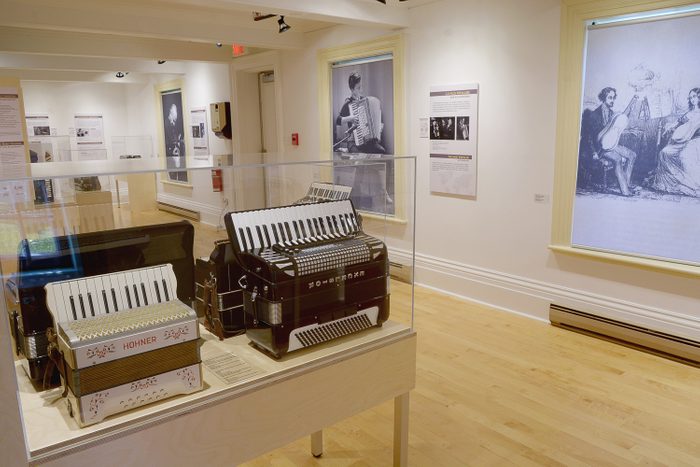
Squeeze a Box
What the fiddle is to Newfoundlanders the 10-button diatonic accordion is to the Québécois. The Montmagny Accordion Museum pays homage to the humble squeezebox with 150 handcrafted, antique specimens and a fascinating overview of the instrument’s contribution to jazz, folk and classical music. Each September, fans gather for the Carrefour Mondial, a two-day festival celebrating all things accordion, with food, line dancing and performances from around the globe. This year’s edition is scheduled for September 1 to 3. Montmagny, Quebec.
Discover more of Canada’s quirkiest museums.

Stop for Fries
Cantine Chez Ben is one of Quebec’s most iconic roadside stops, thanks to a gloriously kitschy, larger-than-life sign featuring the eponymous chef, hot dog in hand. The diner’s excellent poutine—available in Italian, barbecue and ground-beef varieties—comes heaped with giant squeaky curds. Go after dark, when the Ben sign lights up like the Vegas strip. Granby, Quebec.
Here are 10 classic Canadian foods—and the best places in the country to find them.

Ride a Cable Car
Some hidden gems in Quebec are “hidden” in plain sight. The often-overlooked Old Quebec City Funicular has been ferrying people between the Upper Town and Lower Town since 1879. The ride is great fun, as are the sights on both ends of the trip. At the top, you’ll find the majestic Fairmont Château Frontenac, the stone ramparts surrounding the city and row upon row of scenic copper-roofed homes. Down below, there’s the colonial Notre-Dame-des-Victoires church and the original home of fur trader Louis Jolliet, where the entrance to the funicular is located. Quebec City.

Step Back in Time
A walk through the open-air museum of Val-Jalbert, once a pulp-factory company town, is like immersing yourself in the 1920s: each of the 70-odd buildings is meticulously preserved, so you half expect to find the convent schoolhouse filled with children and the mill bustling with workers. Visitors can book a stay in one of the period-era homes or mill-worker houses. Val-Jalbert, Quebec.
For more hidden gems in Quebec, check out the best day trips from Montreal.
They come from Africa, Central Asia, the Middle East and Ukraine. According to the United Nations High Commissioner for Refugees, in 2022 more than 100 million people were forcibly displaced from their homes by war, famine, natural disasters or persecution. These displaced refugees flee with the few possessions they are able to carry, their lives suddenly in limbo.
What happens to them? Some 4.5 million find sanctuary in United Nations-sanctioned refugee camps; at least two million are in “self-settled” camps; and countless others shelter in foreign cities—rooms in hotels and community centres, or basic apartments from where they try to launch new lives.
A lucky few are welcomed into private homes, sharing space with people who want to help, often for a few months. Refugees receive government stipends, to be used for food and other necessities until they can find jobs and become self-supporting; some hosts also receive monthly payments (or sometimes money for rent and expenses from the refugees) to help defray the cost of having guests.
Hosting has its challenges, such as navigating cultural differences and the stresses of daily life that come from living with strangers. But the rewards can be profound.

“She Is Just Like a Mom”
On a cloudy Saturday in September 2021, the temporary clothing-donation centre in a parking lot near Toronto’s Pearson International Airport was bustling with Afghan refugees staying at nearby hotels, all of them wearing face masks because of the pandemic. Fiona Harrower, a volunteer for Canadian Connections, the aid group sponsoring the event, was folding clothes that had not yet been given away.
“Did you see the young woman with the beautiful eyebrows?” Fiona’s co-volunteer asked. “Her name is Rukhshana. She asked if we had any books to give out.”
Fiona was intrigued. A retired teacher, she considered books as necessary to one’s well-being as three balanced meals a day. She wanted to learn more about this young stranger who loved reading. So a few days later, she and some colleagues met with the woman in a café in downtown Toronto. Fiona, 62, listened as Rukhshana Ahmadi, a member of the Hazaras—an ethnic and religious minority that has faced violent discrimination in Afghanistan—told her story.
She had worked as an English translator after studying at university. But following the Taliban takeover, she and her mother, aunt and three siblings headed to Kabul’s Hamid Karzai International Airport to try to leave. It was August 22, 2021. Inside the airport compound they became separated, but finally, Rukhshana saw them at a distance. “I had all of our papers in my hand and began waving at them. Then a suicide bomb went off. The world went black.”
She regained consciousness in the arms of a female U.S. soldier. The soldier was speaking to her, but Rukhshana couldn’t hear. Around them was a scene of horror. An anguished mother clutching her dead infant. A father collapsed over his daughter’s lifeless body. American soldiers everywhere, running and gesturing as they tried to secure the area.
“What happened?” Rukhshana asked, her voice croaking from the dust and debris. On a piece of paper the soldier wrote one word: “bomb.”
“What happened to my family?” she cried. “Where is my backpack?” It held her cellphone and passport.
She later learned that her family had been rushed from the airport and had made it home. Somehow, her torn backpack was recovered, but everything else, including a laptop and a book of stories her grandfather had given her years earlier, the pages turned so often they were shiny, was gone.
“That is why I asked for a book,” Rukhshana told the women in Toronto. “I need to read.”
At that moment, Fiona was startled by a sunbeam that cut through the clouds, illuminating the young refugee’s face. It’s a message from Mom, she thought, recalling a grey day a few years earlier when she had wandered through a local cemetery, looking for the perfect plot to bury her recently deceased mother. She found it when a sunbeam landed on a green hillock with a view, as if she were being instructed from beyond: Here.
Resolved, she turned to Canadian Connections co-founder Marcella Tomàs, seated beside her, and said, “I think I’m supposed to have this girl come live with me.”
Rukhshana’s move from her hotel did not happen quickly. First there was paperwork. The six-month contract the women signed seemed more like a landlord-tenant agreement than anything else, with Rukhshana expected to pay Fiona from the stipend she got from the government Resettlement Assistance Program, about $800 a month. But in January 2022, Rukhshana moved into the back-split home in Mississauga, Ont., where Fiona lived alone. It did not take long for the two women to forge a friendship, and a frank recognition of their cultural differences.
WE WERE ONCE STRANGERS. NOW WE ARE CREATING MEANINGFUL LIVES TOGETHER.
At times, Rukhshana, now 24, has been teary and uncommunicative, worrying over the fate of her family, who made it to Pakistan last fall. (She has applied for them to join her in Canada.) Fiona had a hard time understanding Rukhshana’s moods at first. Now she simply accepts that she doesn’t have to relate to her on that level—and, frankly, can’t.
“I didn’t leave my family behind, and I wasn’t in a bombing,” she says softly, fiercely protective of the young woman she now considers family. Adds Rukhshana, “Humanity is when you respect and accept each other.”

The two women are very much at ease around each other. “Talking is the main thing we do together,” says Rukhshana. “That, and watching programs on TV. One of our favourites is Survivor.”
Although their diets differ—Rukhshana’s is halal—the two have meals together when Rukhshana’s schedule allows it: she has begun an undergraduate degree in journalism. Indeed, the challenge these days is to make sure she catches the train to get to classes on time. “I’ve threatened to throw a bucket of cold water over her if she doesn’t get up,” Fiona says with a laugh. “I haven’t had to resort to that—yet.”
“Fiona is like a mom,” Rukhshana says, smiling shyly. “She does the same things my mom did for me to make sure I felt safe and loved. We may not have the same religion or skin colour, but we have kind hearts. We were once strangers on different sides of the world, and now we are creating meaningful lives together.”
Fiona knows that Rukhshana will probably go to live with her family when they make it to Canada, and she is supportive of that. However, both women know that when that time comes, it will be bittersweet. They are determined to remain close even when they no longer live together.
For now, Rukhshana tells Fiona with a smile, “I’m not moving. You’re stuck with me.” They laugh together, like old friends.

When Faith and Patience Truly Pay Off
Rainer and Maren Koch waited in the municipal government’s meeting room in Schaumburg, near Hanover, Germany, on a drizzly morning in January 2016. A small group of youth workers and parents were there, mostly silent, raincoats unbuttoned, hats clutched in their hands. They had come to meet young refugee boys, seven from Morocco and Algeria—and one from Eritrea: 14-year-old Samuel (Samuel is a pseudonym; he fears the Eritrean military would target family members there), who would be going home with the Kochs.
After more than three months of waiting with no word—after talking with their own four children (then aged 11 to 18) about their desire to host a refugee, after a visit from a youth welfare worker who told them they were expected to provide shelter to someone for six months and should be willing to pull the plug earlier if it was not working out—it had come down to these last few minutes.
“What if he has experienced violence that has made him hard?” Maren, a technical assistant in a pharmacy who also works in a residential program for disabled adults, had earlier asked her husband. “Can we cope with that? Can the kids cope?”
“Remember Hebrews 13:2,” replied Rainer, who works in church development and counselling. He reminded her that by being hospitable, “Some have taken in angels without knowing it.”
As the young refugees filed into the hall, Rainer, now 52, tried to read their expressions, the stubborn set of shoulders and feet that were barely picked up off the ground. “They must feel so alone,” he whispered to Maren. “Is this what it means to have lost everything?”
Then suddenly, as Samuel appeared before them, an idea that had once seemed nebulous took on the shape of a boy they knew nothing about, except for his name and that he belonged to the Eritrean Orthodox Tewahedo Church.
The couple spent 30 minutes with Samuel and an interpreter of Tigrinya, the language widely spoken in Eritrea. Rainer and Maren tried to communicate with the closed-off teen through hand gestures, pictures and smiles. But he barely looked at them and later, in the car, sat silently in the back seat, his eyes betraying no emotion.
Glancing at him in the rear-view mirror, Rainer thought, Something unexpected is beginning, a new phase of life for this family. He knew they were in it for better or worse, with no road map.
At first there was tension. Samuel spent a lot of time alone in his room, sullen. He was trying to make sense of his surroundings, of his new school, of a language he didn’t understand. Rainer and Maren did not know if his attitude was because of cultural differences, puberty or plain stubbornness.
Although a translator came once a week to help the family learn how to communicate with the youth, if there was progress, it was hard to see. Samuel sat at the family dinner table but didn’t eat a lot.
“If only he could see that we only want what is best for him,” Maren told her husband.
BIT BY BIT, AS HIS GERMAN IMPROVED, SAMUEL SHARED THE STORY OF HIS ESCAPE FROM ERITREA.
The six-month deadline for the end of his stay came and went—there was no way Rainer and Maren were going to let him go—and bit by bit, as Samuel’s German improved, he shared his story.
Without telling his parents, he said, at age 13 he fled Eritrea for Ethiopia and then Sudan, because the Eritrean military was conscripting boys. He had heard stories about child soldiers being physically abused, given meagre rations and paid little or nothing.
Once he reached Sudan, he called home to ask his parents for money because he needed to pay human traffickers to move him out of the country. Transported in open trucks through the Sahara desert toward Libya, after which he hoped to make it to Europe, he watched as other refugees fell off and were left behind to die.
His story finally out, and with a sense of security in his new home, Samuel began to change. He was more relaxed, and he laughed. Rainer and Maren’s children now considered him a brother, and they always had his back.
Today, Samuel is 21. All of his hard work to make a new life and to accept help from his German host family has paid off. Still living with the Kochs, he’s now a permanent resident of Germany, a high school graduate with a driver’s license and a job as an apprentice automotive mechatronics technician; he is learning to install components and maintain and repair cars.
Looking back, the Kochs attribute the positive outcome to having the confidence that unconditional love and openness would show the way.

A New Home, a Second Family
It was early March 2022, and in Gex, a picturesque French town near the Swiss border, Maxim Artamonov was watching with growing horror the news of the Russian invasion of Ukraine.
Raised in Moscow but a citizen of Switzerland since 1992, the 52-year-old secretary general of a not-for-profit business association was both ashamed and angry. Putin’s “special military operation” was clearly a brutal, baseless war. More than one million Ukrainians had already fled for their lives.
I have to do something, he told himself. I have to help.
It didn’t seem fair to Maxim that he had a four-bedroom, two-bathroom home all to himself. His wife, Kemlin Furley, a representative for the UN High Commissioner for Refugees (UNHCR), was stationed 4,000 kilometres away in Tbilisi, Georgia, and their two sons were living in London.
His thoughts drifted to Tatiana Halchanskya, a gentle 60-year-old Ukrainian with a wide smile who had cared for their boys back in 2010, when Kemlin’s work for the UNHCR took them to Moscow. The family had kept in touch with Tatiana over the years, and Maxim knew she was now back in Ukraine—and that she was terrified. Her life with her husband in their house with a beautiful flower garden had been upended by the war.
Tatiana’s sister, Liidia Cherkasova, was still in Russia but was trying to get back into Ukraine to be with her husband and son. Their home was in the southeast, near the Zaporizhzhia nuclear power plant (later to be commandeered by Russia).
After talking it over with Kemlin, Maxim decided he’d give the sisters a safe place to stay, if they wanted it.
So that first week in March, Maxim used WhatsApp to message Tatiana and Liidia. “I am so sorry,” he wrote. “I feel so ashamed to be Russian. And I want to offer you shelter.”
Maxim first needed to get Liidia, 58, plane tickets so she could flee Russia. Because of sanctions against the country, she had to fly from Moscow to Casablanca, then to Geneva. Maxim met her at the airport on March 14 and drove her the 18 kilometres to Gex.

“You’re home now, for as long as you need it,” he said. Her demeanour as gentle as her sister’s, Liidia was grateful but worried about her husband, who has only one lung, and their son.
Around the same time, Tatiana’s husband was driving her on a white-knuckle 600-kilometre trip from their home in Kupiansk in eastern Ukraine to Kyiv, where they reunited with their son’s wife, Yunna Halchanskya, 32, and their toddler grandson, Herman.
Together, they continued to the Polish border, where the women and little boy said goodbye to Tatiana’s husband; he would stay behind with his son to fight. The trio then embarked on a series of train journeys totalling more than 1,900 kilometres, arriving in Gex one day after Liidia, exhausted and relieved to have found sanctuary.
For Maxim, there was no second-guessing his decision. These families gave a face to the war, and he could not look away. He set the sisters up with rooms in the main house, while Yunna and Herman moved into the apartment over the garage.

Herman turned four a few weeks after the family arrived in Gex and began attending preschool—in a new language, French. The three women took jobs painting and cleaning houses and gardening in order to send money home and give back to their host. Says Tatiana, “Work helps take our minds off of what is happening in our country, and to our men, to our homes.”
When the women weren’t working, they tended Maxim’s garden. In the surrounding area, they picked cherries, apples and walnuts, which they turned into jams, strudels and bread. At mealtimes, they would talk about their fears and tell Maxim what they missed about home.
Maxim gave them a credit card to use for food and everyday necessities while they waited for the French authorities to process their refugee claims. He taught Yunna how to drive a stick shift so she could borrow the car for the women to work their odd jobs.
Says Tatiana, “Maxim is our guardian angel.”
“We have become a family cobbled together because of war,” says Maxim. “And a family we will remain, no matter where we are.”
He says that for others who are considering welcoming refugees, it’s important that the decision be rooted in generosity rather than a sense of duty. “Simply put, you need an open heart. And I also benefit a lot from their presence, from their help and friendship.”
In June, Yunna’s husband got permission from the Ukrainian government to visit Gex for three weeks. At summer’s end, after nearly five months abroad, Yunna and Herman prepared to return to Kyiv, hoping the worst of the war was over.
“It’s hard leaving our little bubble,” she told Maxim as she and Herman hugged him at the airport. Her mother and her aunt were staying, their towns still too dangerous to go back to. “We have been so privileged,” Yunna said. “It is not a given for refugees to find such generous hosts.”
Maxim smiled. “You can always come back,” he said. “You have a home and family here, too.”
Next, find out how this artisan website became a grassroots disaster-relief organization.


